Equivalent static loads for structural optimization of nonlinear and transient response
Equivalent Static Loads (ESL) algorithms are a family of structural optimization approaches that are becoming increasingly popular. Their main motivation is the possibility of reducing the computational complexity and cost of given structural optimization instances. ESL algorithms approximate given nonlinear or transient structural optimization problems with sequences of linear static optimization problems. Current ESL methods have certain limitations, and in our group, we intend to formulate and develop a new class of ESL algorithms with superior properties and computational accuracy.
Topology optimization of conjugate heat transfer problems
Convection is the transfer of heat through fluid movement. There are two types of convection: natural convection, driven by buoyancy forces from temperature gradients, and forced convection, caused by external forces. Both types are important, for example, in the design of heat sinks. These are heat dissipation devices often used to enhance the rate of dispersion of heat generated by different power sources within computers, other electronic enclosures, or heat-producing machinery. Heat sinks typically consist of a conductive material surrounded by fluid. Design constraints often include product size, leaving the fin array geometry as a key design parameter for engineers.
In our work, we aim to formulate and develop novel approaches for topology optimization of conjugate heat transfer problems, such as the design of heat sinks. The goal is to develop design optimization approaches that require reasonable computational resources and time and lead to non-intuitive designs with superior performance.
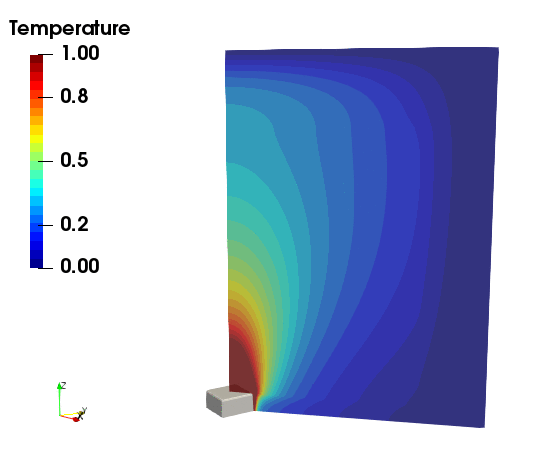
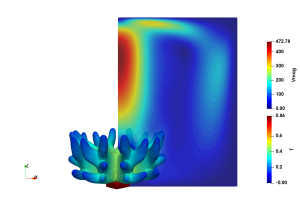 |
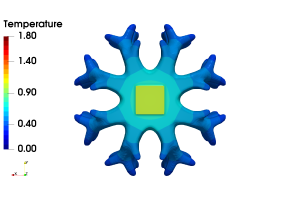 |
Topology optimization of wind farm layouts
The pressure to further develop clean technologies for energy production with minimized carbon emissions is significantly increasing. Wind energy is a broadly available resource and has extraordinarily low life-cycle pollutant emissions. In fact, wind energy technologies have the potential to be the driving force in the global green energy transition. The continuous search for better solutions to reduce costs has led to the installation of clusters of wind turbines with the purpose of maximizing energy production while reducing costs associated, for example, with installation and maintenance. These clusters of wind turbines are more commonly referred to as wind farms in the literature. The design of a wind farm is a highly complex and multidisciplinary process.
When a wind turbine extracts power from the wind, it generates a wake of turbulence that propagates downwind, so the wind speed and thus the power extracted by the downstream wind turbines are reduced. One of the major challenges in the design of a wind farm is the definition of the best layout of wind turbines so that the wake effects between adjacent wind turbines are minimized, and the power extracted from the wind farm is maximized.
In our group, we work on developing the next generation of wind farm layout optimization methods, with a focus on computational efficiency and reliability.
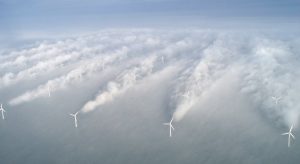 |
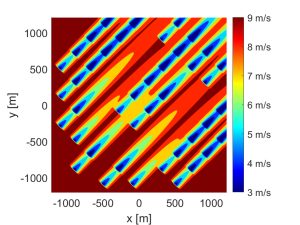 |
Optimization for structural earthquake engineering problems
With the end of the Cold War in the early 1990s, many previously restricted technologies became available to the general public. These technologies were in many cases highly advanced and robust thanks to several years of successful deployment and continuous development for military purposes. One such technology is represented by fluid viscous dampers (FVDs). In civil engineering, FVDs transitioned from structures designed for military defense purposes to commercial buildings and bridges subjected to transient earthquake and wind loads.
In our work, we focus on the use of energy dissipation devices (such as FVDs) for optimization-based seismic retrofitting of existing and new structures. This consists of optimizing the design of added damping systems, to improve the performance and safety levels of existing and new structures subjected to potential seismic hazards. The structural members can also be simultaneously optimized.
We like to mention that the applicability of the optimization approaches developed in our group is not limited to the structural earthquake engineering field. They could be adopted also in the case of structures subjected to different transient loads (e.g., wind loads, blasts).
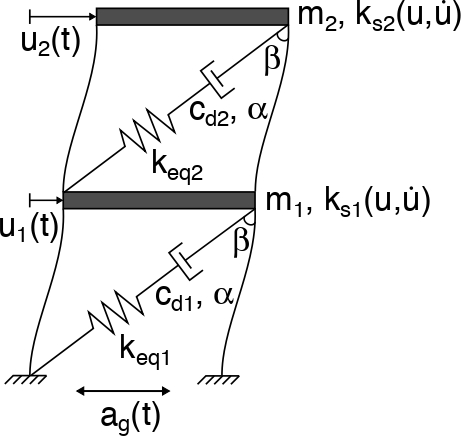 |
 |
Optimization of lightweight cable structures
Cable structures are lightweight, versatile structures with a strong aesthetic and architectural impact. They have been widely used as large span roofs for arenas, stadiums, and open squares. Broadly speaking, cable structures can be divided into: i) pure tensile structures made of two sets of cables – one set supports the structure while the second stabilizes the structure; ii) tensegrity structures made of cables and struts – they are made of a discontinuous set of compressed elements (struts) inside a continuous set of tensioned elements (cables). They are internally self-equilibrated with suitable stable prestress distributions; iii) hybrid tensile structures made of cable and struts – they are designed based on the engineers’ intuition and share many concepts of the first two typologies. The cable dome structural concept was first proposed by Geiger and employed for the roof of the Olympic Gymnastics Hall and the Fencing Hall for the Korean Olympics in Seoul.
Cable domes are made of cable and strut structural elements. In general, cable domes can have internal mechanisms that jeopardize their serviceability and load bearing capacity in practical applications, because the equilibrium is achieved only for large displacements. However, through a state of self-equilibrated initial prestress, in some cases it may be possible to stiffen the internal mechanisms, and turn an unserviceable cable dome structure into a serviceable one.
In our group we are interested in developing novel design optimization approaches for the prestress and sizing of cable structures, accounting for their nonlinear and time-dependent behavior. For this, we develop state-of-the-art and effieicient gradient-based optimization methods and algorithms.
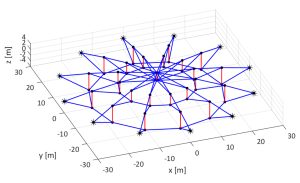 |
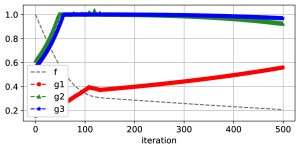 |


